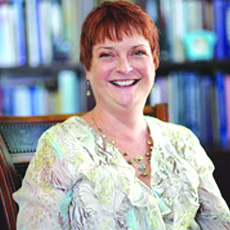
Imagine if you woke up tomorrow morning and couldn’t control what you said or how you felt. You meet a friend for coffee and blurt out that her nose is big. You laugh at bad news. Rage at a child. No one can tell by looking, but a critical piece of your social functioning has been stolen, and with it, your sense of self.
Many people think that physical deficits following an acquired brain injury (ABI) are the most devastating to the patient and family. But instead it is the psychosocial complications in the form of anxiety, depression, mood swings, anger outbursts and social awkwardness that are the most disabling in the long term.
Individuals with acquired brain injuries often endure loss of friends and social support, which leads to chronic loneliness that doesn’t improve over time. They may complain of lack of opportunity to create new friendships or the inability to participate in recreational activities, due, in part, to the social support issues they encounter, which can compound feelings of isolation.
Tangled Pathways
Acquired brain injuries often leave invisible wounds with no single symptom or pathology. Unlike other medical practices that can trace the etiology of illness to a broken femur or damaged organ, brain injury research encompasses all areas from injury severity to functional and cognitive abilities.
To say that the human mind is complicated is an understatement. Consider that each individual has his or her own personality, hormonal system and neurosystem. When you add in values, beliefs and upbringing, not to mention the individual areas of the brain that suffered damage, identifying causality is challenging. Moreover, pre-existing mood disorders or psychiatric conditions can overlap and compound the symptoms of the brain injury.
Holistic Approach to Treatment
Psychosocial complications are best treated holistically, which includes counseling with a cognitive behavioral approach (a form of psychotherapy), systematic structure, problem solving training and neuropsychology support.
An important part of treatment is getting to know the patient and what the person was like before the injury. The therapist may administer a life skills inventory, asking about interests, hobbies and relationships, and building rapport and trust with the individual. In addition, a neuropsychological assessment should be given to evaluate mood, personality and cognitive abilities (memory, concentration, problem solving) in an effort to establish a baseline against which to monitor changes. And finally, therapists should work closely with physicians, when possible, to understand any medical conditions or treatments that may mimic or exacerbate complications.
Applying a practical, holistic approach to brain injury rehabilitation better enables a patient to return to his or her previous lifestyle and thrive in the real world.
Kier Bison, Ph.D., is a clinical neuropsychologist and director of program development for Pate Rehabilitation. Pate Rehabilitation is dedicated to the treatment of individuals with acquired brain injuries, helping them return to the highest quality of life possible.



